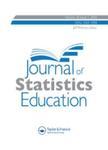版权所有:内蒙古大学图书馆 技术提供:维普资讯• 智图
内蒙古自治区呼和浩特市赛罕区大学西街235号 邮编: 010021

作者机构:Montclair State Univ Informat Management & Business Analyt Dept 1 Normal Ave Montclair NJ 07043 USA Montclair State Univ Accounting & Finance Dept Montclair NJ USA Montclair State Univ Feliciano Sch Business Montclair NJ USA
出 版 物:《JOURNAL OF STATISTICS EDUCATION》 (J. Stat. Educ.)
年 卷 期:2018年第26卷第1期
页 面:17-30页
学科分类:0401[教育学-教育学] 07[理学] 08[工学]
基 金:Khubani/TelebrandsFaculty Research Fellowship
主 题:Alpha and beta coefficients Bootstrap percentile confidence interval Capital asset pricing model GAISE Permutation test Resampling method Sharpe ratio Simulation-based inference Treynor ratio
摘 要:Typically, the core-required undergraduate business statistics course covers a broad spectrum of topics with applications pertaining to all functional areas of business. The recently updated American Statistical Association s GAISE (Guidelines for Assessment and Instruction in Statistics Education) College Report once again stresses the pedagogical importance of topic and application relevancy in an increasingly data-centered world. To this end, only two introductory textbooks have incorporated some financial investment measures (Sharpe ratio and beta coefficient) in the teaching of numerical descriptive measures and simple linear regression analysis, respectively, while a few others include them as real-data application exercises at the end of their respective chapters. Although this latter coverage is in compliance with GAISE College Report recommendations on the importance of using relevant real data applications in the teaching of introductory business statistics, it forgoes an opportunity to provide more detailed discussion within the text itself and add value to a business student s learning. Given that all business students will have an opportunity to learn about financial investment, regardless of their functional area major, this paper offers a more proactive use of these and other financial investment measures as part of the current, traditional course or as part of a suggested dedicated introductory business statistics course for finance majors.